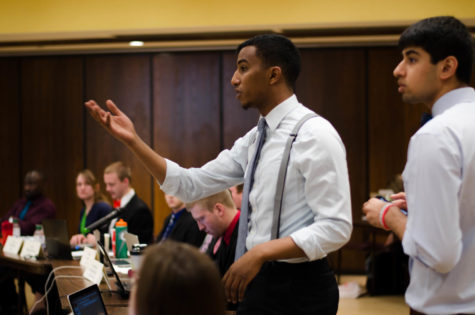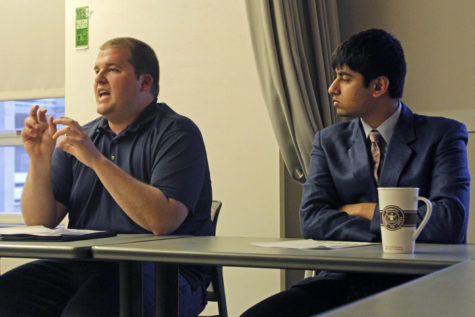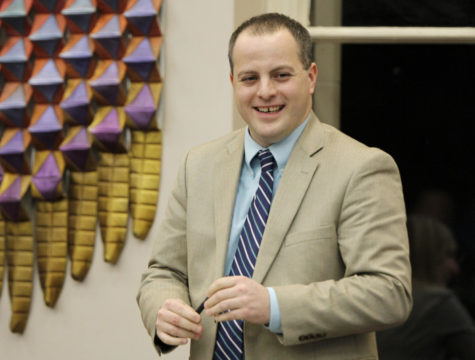Recreation Services fees set to increase
January 31, 2011
The nearly $53 million cost for Recreation Services renovations will fall on students’ and faculty’s shoulders by increasing their recreation services fee.
The Beyer Hall recreation center and State Gym are set to reopen this fall, with debate surrounding the increase in fees.
“Yes, the students who voted the project through [in 2008] had to bear some of the costs in their student fees, but they were looking at a $20 increase. We are dealing with hundreds of dollars over our experiences as students. This is especially relevant to those students who never or rarely use the recreation facilities,” said Tyler Carter, freshman in pre-business.
The fee schedule approved by students in 2008 included a $20 increase per semester for the first two years, followed by an increase to $107 or more per semester for the remaining years.
This fall, for most academic year students, the fee will be $161 per semester.
The increase in fees will also be expanded to faculty members maintaining a recreation services membership.
Faculty members paid $129 for an annual membership this academic year and will pay $403 for the same membership beginning this fall.
Unlike students, faculty members are not required to pay for access to the recreational facilities unless they wish to use them.
Many faculty members currently use Beyer Hall’s recreation services because there is no entrance fee.
This fall, carded access will accompany the renovated facilities and only those with memberships to the facilities will be allowed entrance to Beyer Hall, State Gym and Lied Recreation Athletic Center. Students will continue to use their ISU cards to gain entrance to the facilities.
“Since students are bearing the cost of the facilities upgrades, it is important that all other users share the cost as well,” said Mike Giles, director of Recreation Services.
Renovations include new aquatic facilities, a recreational pool, a climbing wall, jogging tracks, gymnasiums, free weights, multi-purpose activity rooms, locker rooms, five basketball courts, a smoothie bar and many other amenities, including air conditioning for Lied.
“Iowa State has a legitimate need to welcome students to its doors. If students want fitness centers, then the schools would be smart to build fitness centers,” said Hayley Nelson, sophomore in global resource systems.
While many intramural events are held at ISU recreation facilities, some team members do not pay the membership or recreation services fee to have gym access.
In the past, many players have been allowed access without an ISU card only for their event, but beginning this fall, all individuals wishing to gain access to the recreation centers must be a member.
Some faculty are concerned about the use of the facilities for intramural sports.
“The university needs to look at the issue of intramurals and fees. They need to decide if your only use of the facility is for intramurals, whether or not there should be a separate fee,” said Frank Montabon, associate professor of supply chain and information systems.
Other faculty are concerned about the possibility that the increase in fees will result in a decrease in faculty fitness.
“The university needs to look at its wellness policy and whether or not they want to be proactive or reactive about it,” Montabon said.
While many are against the fee increase, there are those welcoming the fees.
“To me the gym will be worth the fee. I love playing pick-up basketball games, but at the same time I hate playing on the track at Lied. Having brand new hardwood floors will be amazing and make playing basketball much more enjoyable,” said Nick McEachron, sophomore in pre-business.
Nelson doesn’t understand the fuss surrounding the increased fee.
“I think people should calm down. Instead of whining about it, why don’t they get off their bums and be a part of the democratic planning process. Don’t wait until something is over to care about it,” Nelson said.
Timeline of Recreation Services renovations:
- In 2002, 1,250 students were surveyed about their satisfaction with Recreation Services. Results from the survey showed students were not fully satisfied with the current programs and services.
- In 2006, another survey was conducted to determine what students were looking for in their recreational facilities. 5,401 students responded with a list of specific changes they would like to see, including full-length basketball courts, a leisure pool, larger weight lifting and cardio areas, and air-conditioned facilities.
- In January 2007, the results of the study were presented to ISU administration and the Government of the Student Body and by December of that year, educational presentations had begun to allow students to learn more about the project and offer their opinion.
- In the presentation, Recreation Services reported that the survey was focused on reviewing the recreation facilities and the “re-shaping of the quantity and quality of Recreation Facilities on the ISU campus to meet current and future demand and to bring recreational facilities into alignment with those of peer institutions.”
- In February 2008 students were asked to vote on the proposed project and proposed increase in student fees.
- GSB had already approved a resolution supporting the project earlier in the month, and as voting came to a halt Feb. 27, 2008, 3,369 students voted “yes” while 3,097 voted “no,” sending the proposal to the Iowa Board of Regents.
- On May 1, 2008, the Board of Regents granted the approval and project planning proceeded.
Courtesy of the Division of the Student Affairs.









